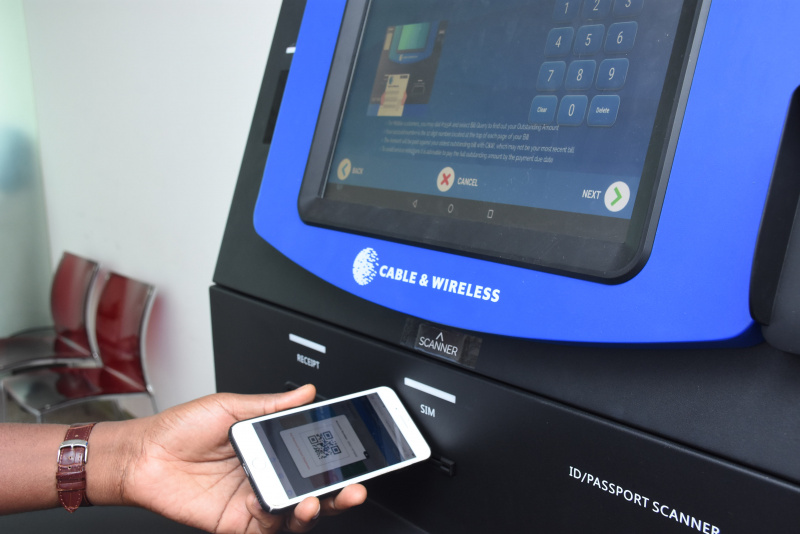Customer Experience Management (CEM) is pivotal in the fast-paced telecommunications industry. Customer Experience in Telecom refers to a user’s overall interaction with their service provider, encompassing every touchpoint from initial inquiry to ongoing support.
It’s more than a transaction; it’s the process that defines satisfaction and loyalty.
In the telecom industry, CEM is not just a buzzword; it’s a strategic necessity. Recent statistics underscore its significance, revealing that companies excelling in Customer Experience in Telecom observe a 60% higher revenue per customer than their counterparts.
Understanding the telecom customer landscape is crucial, where seamless connectivity, personalized services, and prompt issue resolution shape users’ expectations.
In this write-up, we will look into the dimensions of Customer Experience in Telecom, unveiling its definition, emphasizing its critical role in the industry, and providing a snapshot of the evolving telecom customer landscape.
Let’s navigate the strategies that underscore the essence of exceptional telco customer experience management!
Understanding Customer Experience in the Telecom Industry
Let us now explore the fundamental aspects of telecom services and gain insights into Customer Experience Management in Telecoms.
This concise overview emphasizes the industry’s dynamics, showcasing how effective management of customer experiences is instrumental in fostering satisfaction and loyalty within the ever-evolving telecommunications landscape.
Components of Customer Experience in Telecom
Navigating the intricate web of Customer Experience Management in Telecoms requires a comprehensive understanding of its components. In a globally connected landscape, telecom customer acquisition is a fundamental pillar.
The initial interaction sets the stage for the entire customer journey. This crucial element captures strategies and touchpoints designed to attract and onboard customers seamlessly, pivotal in shaping their overall experience within the dynamic and competitive telecom industry.
Examining the components, we uncover the layers that contribute to robust Customer Experience Management in the Telecom framework on a global scale.
1. Network Quality and Reliability

Network quality and reliability are paramount for ensuring a positive customer experience in the telecom industry. Customer feedback serves as a crucial compass in gauging the effectiveness of these elements.
Actively seeking and responding to customer feedback allows telecom providers to identify and address network issues, enhancing overall satisfaction promptly.
A reliable network and a feedback-driven approach establish a foundation for trust and loyalty, reinforcing the commitment to delivering users a seamless and dependable connectivity experience.
2. Customer Service and Support
When discussing customer experience management in telecom, exemplary customer service and support are indispensable.
Leveraging business analytics, telecom companies can refine their service strategies based on customer interactions and preferences. Business analytics provides valuable insights, enabling proactive issue resolution and personalized assistance.
This data-driven approach enhances customer satisfaction and establishes a foundation for long-term loyalty.
As an integral component of telecom customer experience management, the synergy between robust customer service, strategic use of business analytics, and proactive support fosters a seamless and customer-centric operational framework.
3. Billing and Payment Processes
Streamlining billing and payment processes is crucial for elevating customer experience in telecom. Introducing innovations like cash deposits and cash-to-card kiosks provides customers with convenient and efficient payment options.
This technology integration enhances the speed and ease of transactions and improves customer experience in telecom.
Exploring such innovations and optimizing billing processes are essential in creating a seamless and customer-friendly financial interaction, aligning with the broader strategy of continually enhancing the customer experience in the dynamic telecom industry.
4. User Interface and Accessibility
Elevating Customer Experience in Telecom involves strategically focusing on user interface and accessibility. Prioritizing user interface enhancements and accessibility refinements ensures a seamless and user-friendly interaction.
By incorporating user-centric design principles, telecom companies can optimize the customer journey, fostering satisfaction and loyalty.
Continual evaluation and refinement of the user experience, aligned with “how to improve customer experience in telecom,” empower these companies to stay ahead in the dynamic telecommunications landscape.
The Significance of Customer Experience Management
In modern business, the significance of Customer Experience Management (CEM) cannot be overstated. Effective CEM is the essential element for sustained success and growth.
With evolving consumer expectations, companies are turning to advanced Customer Experience Management solutions to navigate the complexities of user interactions.
These solutions empower businesses to gain actionable insights, cultivate customer loyalty, and forge lasting connections.
In this dynamic environment, where customer satisfaction is vital, CEM emerges as a strategic imperative, ensuring survival and thriving in a competitive market.
1. Impact on Customer Satisfaction

The impact of robust customer experience management in telecom on customer satisfaction is profound. Customer experience management strategies, driven by customer-centric solutions, create positive touchpoints throughout the customer journey.
Businesses foster trust and loyalty by prioritizing user needs, providing personalized experiences, and swiftly addressing concerns. This bolsters customer satisfaction and establishes a foundation for long-term relationships.
2. Influence on Customer Loyalty and Retention
Effective customer experience management in telecoms substantially influences customer loyalty and retention. Telecom companies solidify their connection with customers by tailoring services to meet individual preferences, promptly resolving issues, and ensuring a seamless experience.
Customer experience management becomes the bedrock for sustained loyalty, fostering a lasting relationship between customers and telecom providers.
This strategic emphasis on customer experience retains existing customers and contributes to the growth of brand advocates who play a pivotal role in expanding market share.
3. Connection to Brand Reputation and Perception
Customer experience management in telecoms is tightly linked with brand reputation and perception. Exceptional customer experiences resonate positively, enhancing a telecom company’s image.
Customers receiving personalized, efficient services and encounter seamless interactions bolsters brand perception.
Satisfied customers become brand advocates, amplifying positive word-of-mouth. Conversely, neglecting customer experience risks tarnishing a brand’s reputation.
As a strategic imperative, CEM plays a pivotal role in shaping how a telecom company is perceived, influencing customer loyalty and the broader market perception.
Critical Challenges in Customer Experience Management in Telecom
Navigating the domain of Customer Experience Management in Telecom presents multifaceted challenges.
From addressing network connectivity issues to ensuring seamless customer interactions, telecom companies grapple with the intricacies of delivering consistently superior experiences.
Let’s dive in and look at them together.
Technological Challenges
1. Network Infrastructure
The foundation of customer experience in telecom hinges on a robust network infrastructure. Seamless connectivity, minimal downtime, and swift issue resolution are imperative for fostering positive interactions.
Telecom companies continually invest in optimizing their network infrastructure to ensure a reliable and high-quality service, recognizing its direct impact on customer satisfaction and loyalty.
A well-maintained network infrastructure enhances user experiences and forms the backbone of a customer-centric approach in the dynamic telecom industry.
2. Emerging Technologies (5G, IoT, etc.)
Emerging technologies like 5G and IoT are reshaping customer experiences in the telecom industry. These technologies pave the way for enhanced interactions, from lightning-fast connectivity to innovative applications.
Integrating customer-friendly features like WhatsApp appointments exemplifies the industry’s commitment to leveraging cutting-edge technologies for convenience.
As telecom embraces these advancements, the customer experience transforms, offering users seamless and efficient services by integrating emerging technologies.
Customer Service Challenges
1. Handling Complaints and Queries
Efficiently managing complaints and queries is pivotal for a positive customer experience in telecom. The swift resolution, empathetic communication, and proactive handling of concerns contribute to customer satisfaction.
Telecom companies recognize the impact of seamless complaint resolution on overall customer experience, fostering trust and loyalty.
By prioritizing customer concerns, telecom providers strengthen their commitment to delivering an exceptional customer experience, building a foundation for lasting relationships in the dynamic telecom landscape.
2. Balancing Automation and Human Interaction
Striking the right balance between automation and human interaction is essential in improving customer experience in telecom. While automation streamlines processes, human interaction adds a personalized touch.
Telecom companies must strategically integrate technology to enhance efficiency without sacrificing the human touch, ensuring a customer-centric approach.
As part of the broader strategy of improving customer experience in telecom, this delicate equilibrium fosters an appropriate mix of technological innovation and personalized customer engagement.
Strategies for Effective Customer Experience Management in the Telecom Industry
In the competitive telecom industry, compelling customer experience management is vital. This entails strategically implementing personalized services, streamlined processes, and innovative solutions to ensure seamless interactions and heightened customer satisfaction.
Navigating customer experience in telecoms requires a holistic approach that aligns with evolving customer expectations and industry advancements.
- Leveraging Data Analytics
- Proactive Issue Resolution
- Implementing Technology Solutions
- Establishing Clear Communication Channels
- Offering Self-Service Options
- Continuous Monitoring and Improvement
1. Leveraging Data Analytics
Harnessing the power of data analytics is pivotal in refining Customer Experience Management in telecoms. By scrutinizing customer interactions and preferences, telecom companies gain actionable insights, enabling them to tailor services, predict trends, and proactively address issues.
Data analytics enhances operational efficiency and ensures a customer-centric approach, fostering a positive and personalized experience in the evolving telecom industry.
2. Proactive Issue Resolution
Proactive issue resolution is a cornerstone in effective customer experience management in telecom. Telecom companies enhance customer satisfaction by anticipating and addressing potential challenges before they escalate.
This strategic approach minimizes disruptions and demonstrates a commitment to customer welfare, fostering trust and loyalty in an industry where seamless connectivity and swift issue resolution are critical for a positive customer experience.
3. Implementing Technology Solutions
Implementing technology solutions, such as a queue management system, is instrumental in refining customer experience management in telecom. This innovative approach streamlines customer interactions, minimizes wait times, and enhances overall service efficiency.
By leveraging technology solutions, telecom companies can deliver a seamless and organized experience, showcasing a commitment to meeting customer needs in an industry where efficiency and responsiveness are integral to customer satisfaction.
4. Establishing Clear Communication Channels
Establishing clear communication channels is pivotal in customer experience management for telecoms. Providing accessible and transparent avenues for customer interaction ensures adequate information flow.
Whether through online platforms, customer support hotlines, or self-service portals, telecom companies empower users to communicate seamlessly, fostering an environment where clarity and accessibility contribute to a positive and customer-centric experience.
5. Offering Self-Service Options

In enhancing customer experience in telecom, offering self-service options, such as self-service kiosks, is pivotal. These user-friendly solutions empower customers to independently manage their telecom services, from bill payments to account inquiries.
By incorporating self-service options into the customer experience strategy, telecom companies provide a convenient and efficient means for users to interact, contributing to overall satisfaction in the vibrant landscape of telecom services.
6. Continuous Monitoring and Improvement
Continuous monitoring and improvement are fundamental in elevating customer experience in telecom. Regularly assessing customer feedback, service metrics, and industry trends enables telecom companies to identify areas for enhancement.
This iterative approach, aligned with the dynamic nature of customer expectations, ensures a proactive response to evolving needs, fostering a culture of continuous improvement and excellence in customer experience management within the telecom sector.
Case Studies
1. Orange Sierra Leone Transforms CX with Wavetec’s Solutions
Orange Sierra Leone significantly boosted customer experience management by implementing Wavetec’s queuing and self-service solutions. The paperless system, integrated with SMS, streamlined customer flow across eight locations.
The result: shorter wait times, lower churn rates, informed journeys through digital signage, and increased customer satisfaction. This success demonstrates the transformative impact of strategic technology deployment on enhancing customer experiences in the telecom industry.
2. Telcel’s Customer Experience Management Revolution: Wavetec’s Innovative Success Story
Telcel Mexico, a primary telecom provider, partnered with Wavetec to enhance customer experiences. Wavetec’s self-service kiosks streamlined Telcel’s customer service operations, reducing wait times and improving overall satisfaction.
The innovative solution offered personalized experiences, intuitive ticket issuance, and integration possibilities, expanding Telcel’s service offerings.
The outcome was heightened customer satisfaction, operational efficiency, and a competitive edge in the telecom industry regarding customer experience management.
Conclusion
In conclusion, the telecommunications landscape is inherently connected with the dynamic concept of customer experience in telecom. As the industry rapidly evolves, the strategic imperative of prioritizing and enhancing customer experiences remains pivotal.
From leveraging cutting-edge technologies to implementing innovative solutions like self-service kiosks, pursuing excellence in customer experience management becomes the requirement for success.
Continuous monitoring, proactive issue resolution, and the strategic use of data analytics underscore the commitment of telecom companies to delivering seamless and personalized interactions.
In this ever-connected world, where brand loyalty is cultivated through positive experiences, the journey towards optimizing customer experience in telecom becomes a continuous effort for innovation, responsiveness, and customer-centricity.
BOOK A FREE DEMO



